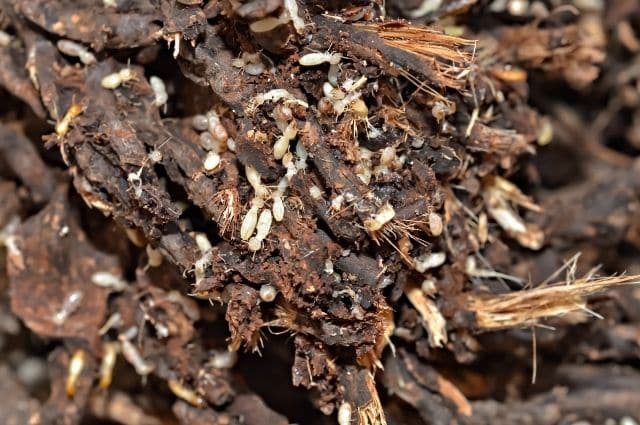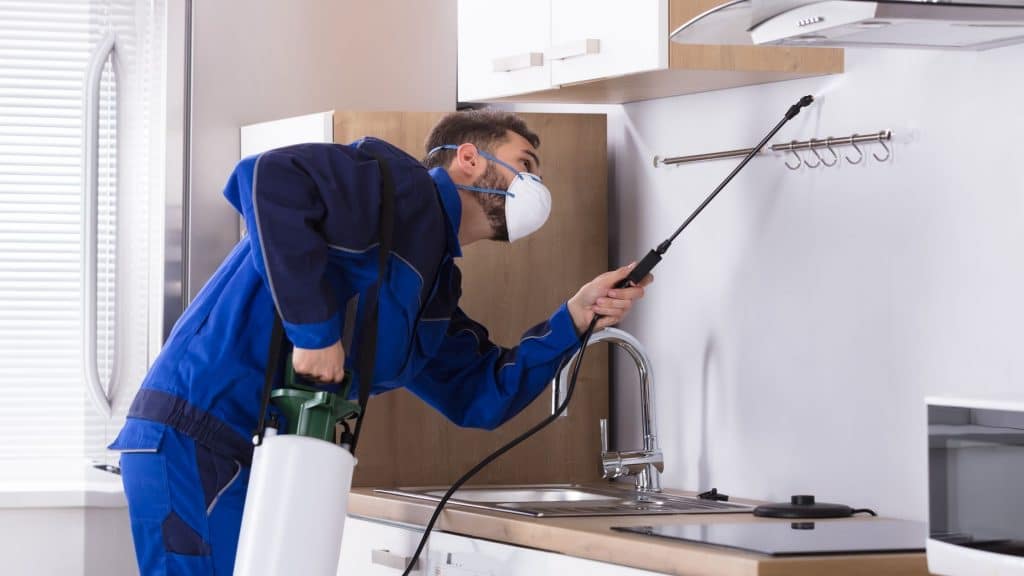Are you wondering why there are holes in your wood walls? Do you have any idea why your floorboards are bulging?
Chances are, a termite infestation has victimized you. Without the proper treatment, the wooden parts in your house can break down entirely!
Termites have been terrorizing homeowners for decades now. In the United States, around 600,000 homes incur damages because of termites yearly.
Subterranean termites are the primary culprits for the majority of home damage in the United States. They establish termite colonies underground and infiltrate your home’s foundation.
Extreme termite damage can cause a property owner thousands of dollars later on. In fact, It’s estimated that termites cause $5 billion in property damage each year.
If you’re looking for the best termite treatment for small homes, then you’ve come to the right place!
Want to completely eliminate any signs of termites in your house? Read on to find out the most effective ways to get rid of them!
Types of Termites
A termite infestation in your house is a huge problem. Chances are high that they could damage your home soon, especially if the problem isn’t treated correctly and immediately.
One of the first and most important things to do if you think your home has been infested by termites is to identify their species. Although there are around 2,000 termite species in the world, the following are the most common ones to U.S. homes:
Subterranean Termites

Subterranean termites are the most destructive species in the U.S. They live in underground colonies or moist-secluded areas with up to two million members.
They are known builders of “mud tubes,” which they use to enter areas with possible food sources and protect themselves from open air.
Formosan Termites
Formosan termites are the most gluttonous, aggressive, and sly species of termites. They organize themselves into huge underground colonies to build mud nests inside the walls of a property.
Drywood Termites
As the name suggests, drywood termites like infesting on dry wood. Unlike other termite species, they do not require soil contact. They establish nests in roof materials and wooden walls and can infest dead wood around houses.
Although they aren’t dependent on moisture to survive, they can also cause water damage by infesting wood near leaky pipes and water heaters
Signs of Termite Infestation In Your House
To get rid of termites in the house, you’ll need to keep an eye for the following termite activity signs:
Mud Tubes
Look for possible food sources of termites in your home and you’ll likely see some pencil-sized mud tubes. These mud tubes are typically built by subterranean termites nesting underground.
Discarded Wings and Termite Swarmers
One of the most common signs of termite damage is the presence of termite swarmers, with or without wings. These are their young reproductive species that are very active during springtime to mate and search for a new home.
You’ll see these swarmers flying near your closed windows, doors, and other entry points. If not, check if there are any discarded wings. They usually twist their wings to discard them when they land on your property.
Damaged or Hollow Wood
Termites get very, very voracious. And when they do, they feed a lot on wood.
One of the signs that you have a termite problem is to tap wood along the walls, baseboards, and windowsills using a screwdriver handle. Damaged wood will sound hollow and may break with a few taps.
If the wood is damaged, you’ll see worker termites inside moving quickly when exposed to light.
Frass (Termite Droppings)
Frass is one of the key signs of termite infestation. Drywood termites are the common suspect of grass.
Unlike subterranean termites, drywood termites don’t need to use their feces when building tunnels, instead they push their dung out of small holes near their nest entrance. This will then result in small black marks and dark powdery substance around the infested area.
If you see any of these signs of termite activity, call a pest extermination company to conduct a thorough termite inspection.
5 Effective Termite Treatments For Small Homes
Try these home remedies to get rid of any termite activity in your house:
1. Termite bait stations
Termite baits can destroy an entire colony of termites.
It’s usually installed around the house. Termite baits work by tricking termites into eating the poisoned bait and bringing it back to the colony to share.
The bait station can keep termites away as long as they are regularly maintained and inspected annually.
2. Using pesticide barriers
This treatment prevents termites from entering by applying a liquid barrier around your home, which poisons them upon contact.
These liquid termite barriers also work by inhibiting soil moisture, so termites wouldn’t be able to thrive.
Pesticide barriers are undetectable, and some have properties that can poison other termites.
3. Applying Termidor Foams
The most straightforward way of termite control is by immediately applying Termidor foams during sightings or on termite hideouts.
Compared to the previous methods, this treatment can be performed inside your home. Its lack of odor and natural evaporation makes it a safe indoor alternative.
Termidor foams and liquid barrier treatments have the same active ingredient, Fipronil.
Fipronil is also a common ingredient used for other pest control treatments. The foam is only harmful to creatures the size of termites.
4. Dusting termite-rich areas
Another way to kill termites is to dust areas where termites are usually located.
This type of treatment can be both organic and inorganic.
Diatomaceous earth is the primary natural termite killer. For the inorganic method, boric acid is stored in a powder duster.
Diatomaceous earth is safer to use but will take about 10 days to kill a termite.
Boric acid, on the other hand, works as fast as 3 days, but its effectiveness diminishes when in contact with water during rains.
Depending on the application, both will do the job when applied correctly.
5. Using nematodes on the soil
Nematodes are parasitic roundworms that feed on termites.
This all-natural soil treatment is arguably the most effective among all the methods mentioned above.
The nematodes are mixed with water and allow to sit for 30 minutes at room temperature to create a termite killer.
Potting soil and water are added once again before applying the mixture to infested areas. Usually, this method is done at night because nematodes are sensitive to light.
Nematodes are inexpensive and are purely organic. You don’t have to worry about health risks when applied to termite reach locations.
Book a Termite Inspection!

Just like controlling other pests, termite treatments vary depending on your home’s needs.
However, it is also important to note that at-home remedies don’t ensure effective extermination.
You may also put your home and family at risk, especially for exterminations that involve chemical treatments.
To safely and effectively get rid of these termites and other pests, consult a pest control specialist!
If you’re in Prescott, Arizona, Patriot Pest And Termite Control is your local exterminator expert that offers a wide range of pest control services, including termite inspection and treatment.
Contact us and learn more about how we take care of pest-related problems.
Want to know other extermination alternatives? Ask us a question by leaving a comment down below!